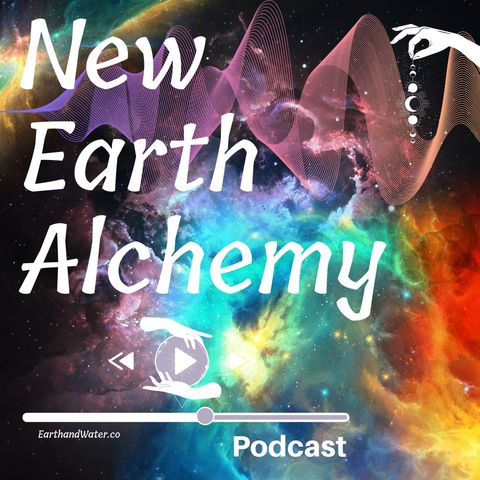Ostara; A celebration of the Spring Equinox

Descarga y escucha en cualquier lugar
Descarga tus episodios favoritos y disfrútalos, ¡dondequiera que estés! Regístrate o inicia sesión ahora para acceder a la escucha sin conexión.
Descripción
Accompanying Blog Post: https://earthandwater.co/ostara-a-celebration-of-the-spring-equinox/ Ostara is a celebration of the Spring Equinox in the northern hemisphere and the Fall Equinox in the southern hemisphere. What’s an equinox? I asked also,...
mostra másOstara is a celebration of the Spring Equinox in the northern hemisphere and the Fall Equinox in the southern hemisphere.
What’s an equinox? I asked also, which is sad. Our modern society and culture has erased something that was such a huge part of our ancestor’s formulation of life and a massive cause for celebration.
The equinox occurs twice a year when the sun crosses the Earth’s equator and causes both day and night to be of equal length. It’s the marking of the changing of the seasons. A check point like in Super Mario where you had a hard level (say, winter) and the game let you save half way through so you don’t have to redo the whole thing when you die. If you’ve ever played video games, you know check points are a great cause for celebration.
Let’s note, for inclusiveness sake, that this doesn’t apply to the poles, since the sun dips out for months at a time and then over stays it’s welcome for also months at a time. I guess I can’t speak for that experience, but it sounds terrible to me.
Anyway, long before the word “Ostara” graced our lips, civilizations across the globe held rituals marking the spring equinox. The ancient Egyptians held the Sed Festival, celebrating the king’s rejuvenation and the land’s fertility. In Persia, Nowruz heralded the start of a new year with vibrant feasts and fire ceremonies. Even the Roman Hilaria, with its playful processions and masked revelry, resonates with the joyous spirit of spring.Ostara’s specific name points towards a Germanic goddess, Eostre. References to her are scarce, appearing in only a handful of ancient texts. Scholarly interpretations diverge, some associating her with spring and dawn, others with love and fertility. Regardless of her precise role, Eostre’s influence on the springtime celebration is undeniable.
In the absence of concrete historical records, myth and folklore paint a vibrant picture of Ostara’s evolution. From tales of the goddess Eostre transforming a bird into a hare (symbolizing fertility somehow, I don’t get it either), to legends of eggs hidden and sought, celebrating new beginnings, these stories weave a narrative of springtime magic and renewal.
While the myths and legends add a layer of enchantment, the true essence of Ostara lies in its connection to the natural world. It’s a celebration of the burgeoning life after winter’s slumber, honoring the fertile energies that awaken the earth. It’s a time to acknowledge the balance of light and dark, day and night, reminding us of the ever-turning wheel of seasons. You know, Yin and yang and the importance of both.
Today, Ostara continues to evolve, embracing diverse interpretations and personal expressions. From planting seeds and creating nature altars to sharing feasts and practicing mindful meditation, individuals connect with the spirit of the season in unique ways.
So, as we step into the light of spring, remember that Ostara is more than just a festival. It’s an invitation to explore the mysteries of the past, connect with the rhythms of nature, and celebrate the potential for renewal within ourselves and the world around us. It’s a reminder that, just like the earth awakens with each spring, so too can we experience our own personal rebirth and embrace the vibrant journey of life.
Beyond the colorful eggs and playful bunnies, Ostara offers a profound opportunity for introspection and connection, inviting us to reconnect with our inner world, the earth around us, and the unique magick of this time of year. This is the true legacy of Ostara, a tradition passed down through generations, whispered through myths and legends, and now waiting to be reinterpreted and celebrated in your own unique way.
It’s funny how something so celebrated in our ancestor’s time has become unrecognized by the majority in our modern, disconnected time. The actual date of the equinox can vary by a few days, always staying between the 19th and the 21st of March.
Astrology recognizes this day as the beginning of Aries season as well, which is fitting since Aries is a cardinal sign which signifies the energy of new beginnings. There’s also a “horned god” that is sometimes associated with Ostara and Aries is the ram. Synchronicities everywhere.
Most would look at Ostara as Easter. It has many overlapping aspects and has, over the centuries, blended together more or less as one. I first became aware of it through the show American Gods. Which, if you haven’t seen, I highly recommend.
Ostara celebrates the ending of the cold dark winter and the beginning of the warm, bright and colorful spring. When hardships brought along by the harsh vata weather are easing and once again the earth is inviting and plentiful with food.
The history of Ostara is debated by scholars, some insisting it’s a modern creation and some tracing roots back to various gods and religions throughout history. No matter where it came from, the symbolism it carries in connecting us with our Earth and inner world is undeniable and it makes for a wonderfully spiritual celebration to partake in.
Información
| Autor | Savannah Blake |
| Organización | Savannah Blake |
| Página web | - |
| Etiquetas |
Copyright 2024 - Spreaker Inc. an iHeartMedia Company
